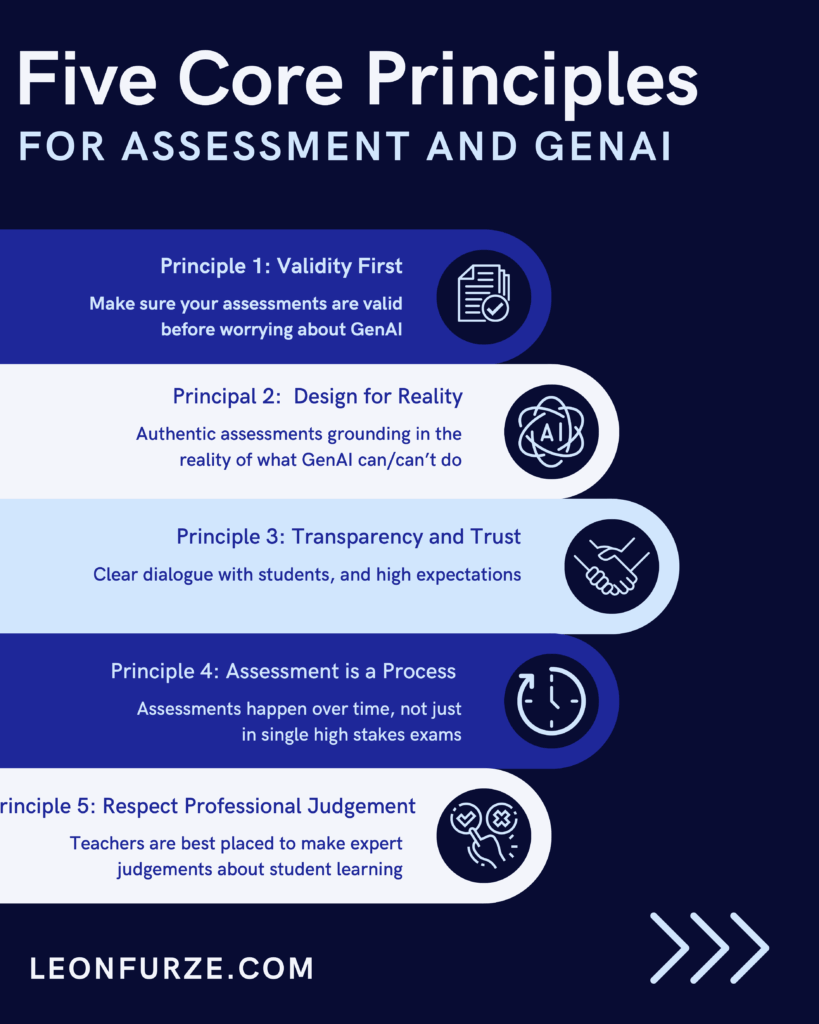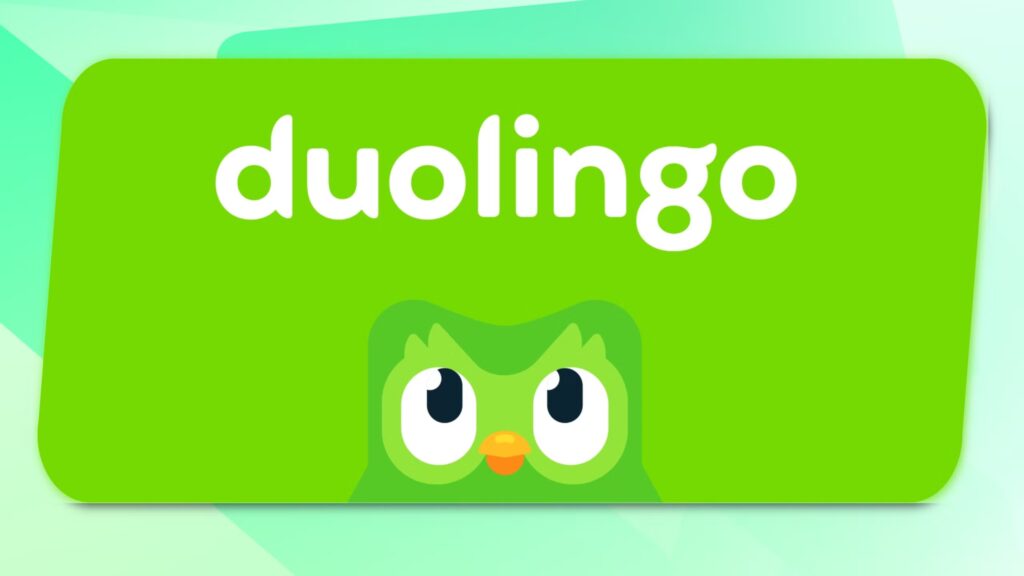I gave all my Apple wealth away because wealth and power are not what I live for. I have a lot of fun and happiness. I funded a lot of important museums and arts groups in San Jose, the city of my birth, and they named a street after me for being good. I now speak publicly and have risen to the top. I have no idea how much I have but after speaking for 20 years it might be $10M plus a couple of homes. I never look for any type of tax dodge. I earn money from my labor and pay something like 55% combined tax on it. I am the happiest person ever. Life to me was never about accomplishment, but about Happiness, which is Smiles minus Frowns. I developed these philosophies when I was 18-20 years old and I never sold out.
– Steve Wozniak via Slashdot
Day: August 18, 2025
Beyond Policing AI: Rethinking Assessment Through Authentic Learning and Connectivism

Leon Furze makes an important case: if the best we can do in the age of AI is to tighten surveillance, we’ve already lost.
In all corners of education, we need to stop policing artificial intelligence and focus instead on designing better assessments. GenAI gives us an excuse to have these conversations. AI needs to prompt us to reflect on what matters most: validity, fairness, transparency and of course, learning.
Instead of treating generative AI as a threat to assessment, we should see it as a provocation—an opportunity to reimagine how we measure and value learning. His five principles (validity, reality, transparency, process, and professional judgement) are solid on their own, but when refracted through authentic learning and connectivism, they take on even sharper meaning.
1. Validity becomes authenticity.
Assessment validity isn’t just about matching standards to outcomes—it’s about ensuring that what students are asked to do actually matters. Authentic learning demands that assessments reflect the messy, interconnected problems students will face beyond school. A lab report, a policy pitch, or a podcast that connects with a real audience provides validity in a way a locked-down multiple-choice exam never will. AI doesn’t threaten that kind of assessment; it strengthens it, because students must decide how and when to use the tool responsibly within authentic contexts.
2. Designing for reality means designing for networks.
Furze’s “design for reality” principle resonates strongly with connectivism. The reality is that knowledge no longer lives solely inside a student’s head—it’s distributed across networks of people, resources, and technologies. An assessment that ignores that fact is already outdated. When we allow students to bring AI into the process (declared openly, as Furze suggests), we invite them to practice navigating networks of information, filtering noise from signal, and building connections that mirror the way knowledge flows in the real world.
3. Transparency and trust are relational, not transactional.
Authentic learning environments thrive on trust: teachers trust students to take risks, and students trust teachers to guide without over-policing. Connectivism reminds us that learning happens in community, and that means shared norms around how tools like AI are used. Instead of “thou shalt not” rules, we need open conversations: Why might you use AI here? When might it short-circuit your learning? Transparency becomes less about compliance and more about cultivating reflective practitioners who can articulate their choices.
4. Assessment as process = learning as ongoing connection.
If assessment is a process, not a point in time, then it looks less like a final judgment and more like a portfolio of evolving connections. Students don’t just demonstrate what they know; they show how they know, who they connect with, and how their thinking shifts over time. This is connectivism in action: learning is the ability to make and traverse connections, not the ability to store facts in isolation. AI can become part of that process—as a collaborator, a draft partner, or even a provocateur that challenges their assumptions.
5. Respecting professional judgement = empowering educators as designers.
Authentic learning doesn’t happen in lockstep with rigid policies; it requires teachers to design experiences that matter in their contexts. Connectivism reminds us that teachers are nodes in the network too, bringing their expertise, relationships, and creativity. Respecting professional judgement means trusting teachers to balance the affordances of AI with the human dimensions of belonging, curiosity, and care.
The big takeaway?
AI doesn’t invalidate assessment. It invalidates bad assessment. If the only way an assignment “works” is by pretending students live in a vacuum, disconnected from tools, networks, and communities, then it was never truly authentic to begin with.
For those of us who see learning as both deeply human and deeply networked, Furze’s five principles are a call to action: design assessments that honor authenticity, embrace connections, and prepare students for a world where knowledge is always evolving—and never isolated.
The Eclectic Educator is a free resource for everyone passionate about education and creativity. If you enjoy the content and want to support the newsletter, consider becoming a paid subscriber. Your support helps keep the insights and inspiration coming!
Teaching the Unmappable: Why Color Defies Easy Charts
For centuries, scientists, artists, and philosophers have tried to pin down a “perfect” way to map color. But here’s the problem: color isn’t just physics, and it isn’t just perception—it’s both. Try to squeeze it into a neat geometric model, and you’ll quickly realize it refuses to stay put.
That’s what makes French video essayist Alessandro Roussel’s latest ScienceClic piece so fascinating for educators. He takes us from Isaac Newton’s prism experiments all the way to modern models of hue, brightness, and saturation. Along the way, he shows why there isn’t just one map of color, but many. Each communicates something different about how humans experience this slippery phenomenon.
So what’s the classroom connection?
- In art: Students can compare different models of color—Newton’s circle, Munsell’s tree, the modern RGB cube—and reflect on how each changes the way we think about mixing, matching, or designing with color.
- In science: Teachers can use these models to illustrate how physics collides with perception. Why do two people see the “same” red differently? How does light wavelength interact with the human eye and brain?
- In interdisciplinary projects: Color mapping opens doors to conversations about how humans create systems to explain the unexplainable. It’s a perfect bridge between STEM and the humanities.
And then comes the kicker for students who think we’ve “solved” everything already: scientists recently managed to engineer a new, so-called impossible color called ‘olo’—a shade outside the traditional visible spectrum.
It’s a reminder that color isn’t just a solved equation or a finished wheel. It’s a living, shifting puzzle that still invites curiosity, wonder, and experimentation.
Imagine giving your students that as a challenge: If color can’t be mapped perfectly, what’s your best attempt?
The Eclectic Educator is a free resource for everyone passionate about education and creativity. If you enjoy the content and want to support the newsletter, consider becoming a paid subscriber. Your support helps keep the insights and inspiration coming!
Can an App Cure Math Anxiety? Duolingo Thinks So.

Most of us have heard (or said) the phrase: “I’m just not a math person.”
Duolingo—the same company that made millions of people practice Spanish while waiting in line at Starbucks—is on a mission to change that story.
You probably know Duolingo as the language app with the slightly unhinged green owl who won’t let you forget your streak. But since 2022, Duolingo has been quietly building something new: a math course. And just like its approach to languages, the company believes it can make math more approachable, less intimidating, and maybe even fun.
Why Math? Why Now?
According to Samantha Siegel, the engineer leading Duolingo’s math push, the choice to focus on 3rd grade and up wasn’t random. Around that age, kids hit fractions—and that’s where things start to go sideways for a lot of learners. Fractions are a gateway. Struggle there, and the rest of math often feels like a foreign language.
Duolingo’s idea: treat math like a language. Build fluency through small, repeatable practice. Create low-stakes games. Give immediate feedback. And—most importantly—reduce the anxiety that creeps in when kids (and adults) start believing math is beyond them.
How It Works
If you’ve ever tapped your way through Spanish verbs or French phrases, the math experience feels familiar—but with some clever twists:
- Dynamic problems: Lessons refresh with new numbers every time, so you’re not memorizing answers—you’re actually practicing.
- Interactive input: Instead of multiple choice, you might drag the corners of a rectangle to measure area, or handwrite a fraction into the screen.
- Visual learning: Geometry isn’t just explained; it’s something you manipulate on the screen.
In other words, the app tries to ground abstract math ideas in movement, visuals, and play.
Tackling Math Anxiety Head-On
Here’s the thing: math anxiety is real, and it’s not just about ability—it’s about confidence. When kids (or adults) tense up at the first sight of an equation, their brains literally struggle to process what’s in front of them.
Duolingo’s bet is that by gamifying the experience, they can lower the stakes. Just like the app makes it totally fine to get a French verb wrong, it’s trying to make it okay to fumble a fraction. In a classroom context, that shift could matter—a lot.
Where It Stands Today
The math course is now baked right into the main Duolingo app, alongside language and even music lessons. Learners can keep their streak going across subjects—whether they’re conjugating verbs, strumming chords, or multiplying fractions. Duolingo hasn’t shared exact numbers, but we’re talking millions of math users already.
And it’s not just for kids. Plenty of adults are using it too—either to brush up on long-forgotten basics or to help their kids without pulling out dusty textbooks.
What This Means for Educators
Is Duolingo going to replace teachers? Of course not. But as a supplemental tool, it’s promising. It gives students a way to practice math outside the classroom that feels a lot more like a game than homework. It also gives parents an accessible, non-threatening entry point into supporting their kids’ learning.
The bigger story here is the attempt to reframe math itself. If Duolingo can help chip away at the “I’m not a math person” narrative—if it can make math feel just a little more like a game and a little less like a stress test—that’s a win.
Final Thought
Duolingo isn’t just teaching fractions and geometry; it’s trying to rewrite how learners feel about math. And in a world where math anxiety holds so many students back, that mission might matter even more than the streaks.
Maybe, just maybe, the next time someone says “I can’t do math,” we’ll have an owl to thank for proving them wrong.
The Eclectic Educator is a free resource for everyone passionate about education and creativity. If you enjoy the content and want to support the newsletter, consider becoming a paid subscriber. Your support helps keep the insights and inspiration coming!